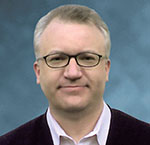Bill Siwicki
"From the care team point of view, this means less activity but more action, less documenting but better documentation, and better coordination but less coordinating," one expert explains.
Leadership demands and imperatives have changed for CIOs, CMIOs and other health IT execs over the tumultuous years of the COVID-19 pandemic. An expert in leadership skills offers guidance.
Connecting care teams and enabling information sharing among hospitals, group practices and, most importantly, families is crucial to helping more senior citizens get healthcare at home.
The New York health system launched telehealth in 2019 and widely diversified its offerings to, among other things, decrease inpatient length of stay and readmission rates.
After redesigning and automating patient throughput processes, the organization experienced a 51% reduction in FTE daily hours worked in the logistics center. This included a drop from 116 to 56 hours per day.
The inventor of the first commercial full-body, automated scanning system dives into where artificial intelligence can play big roles in the industry.
A physical therapist and telehealth expert shows how the technologies can help patients, especially in disadvantaged populations, access the care they need and stick to a care plan.
The University of Montana College of Health has expanded its telehealth offerings across many disciplines to reach more people, especially in tribal communities.
The concept of a health data utility formalizes the wide scope of functions many health information exchanges already deliver. And work on social determinants of health is adding to the mix.
The prior authorization process is a pain – even the Surgeon General knows. Here, one physician IT leader highlights how electronic prior authorization can make life a lot easier for all involved.










